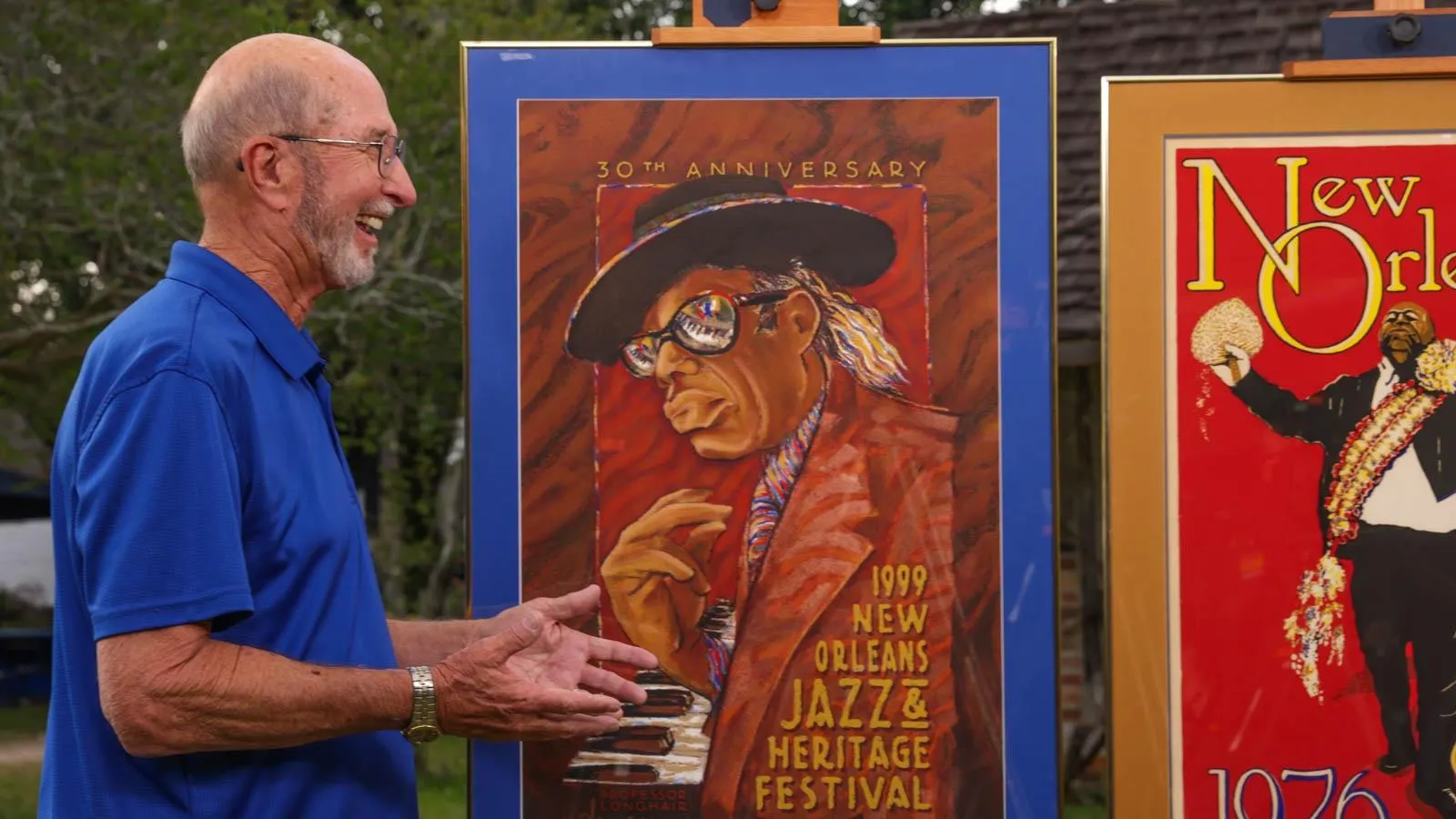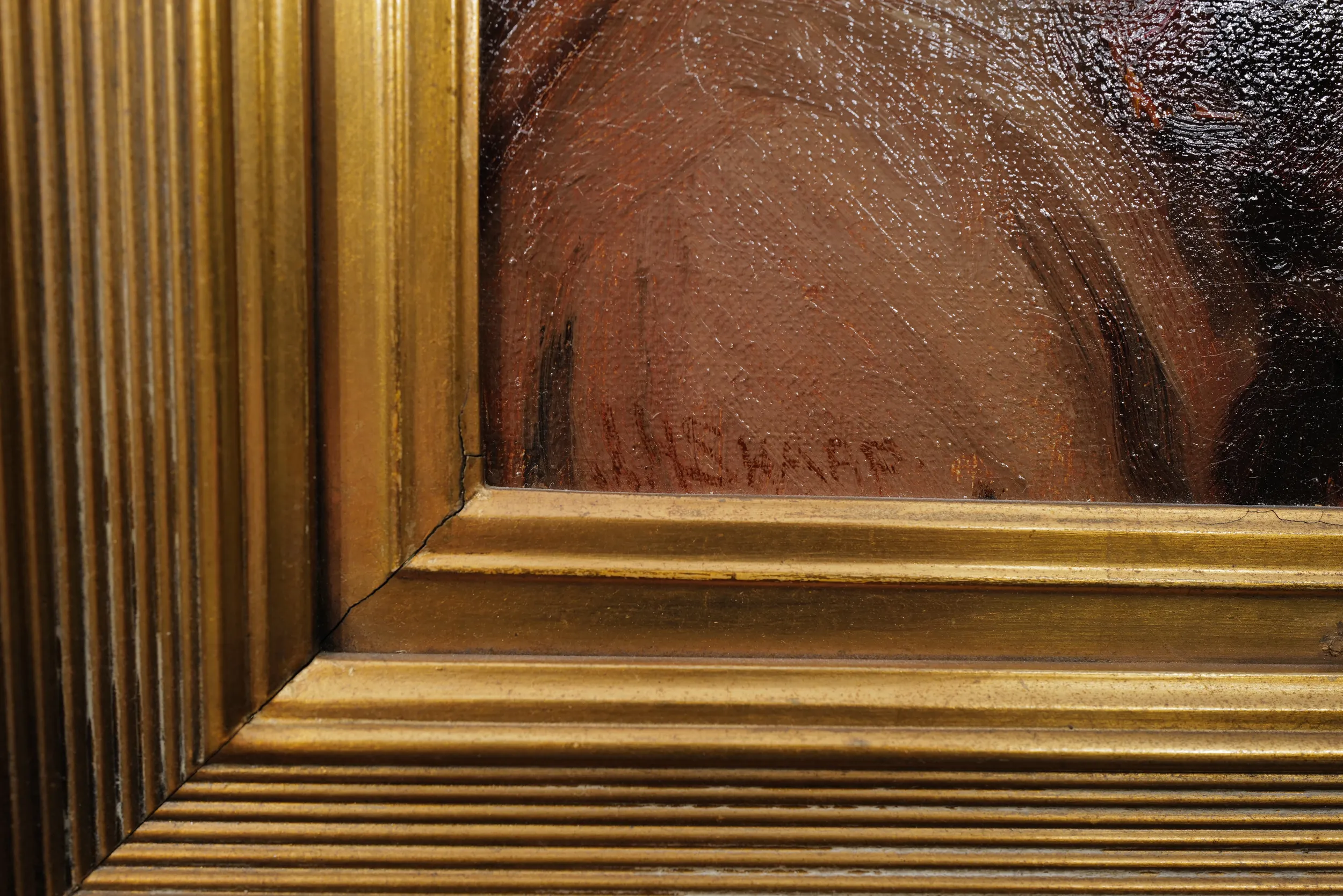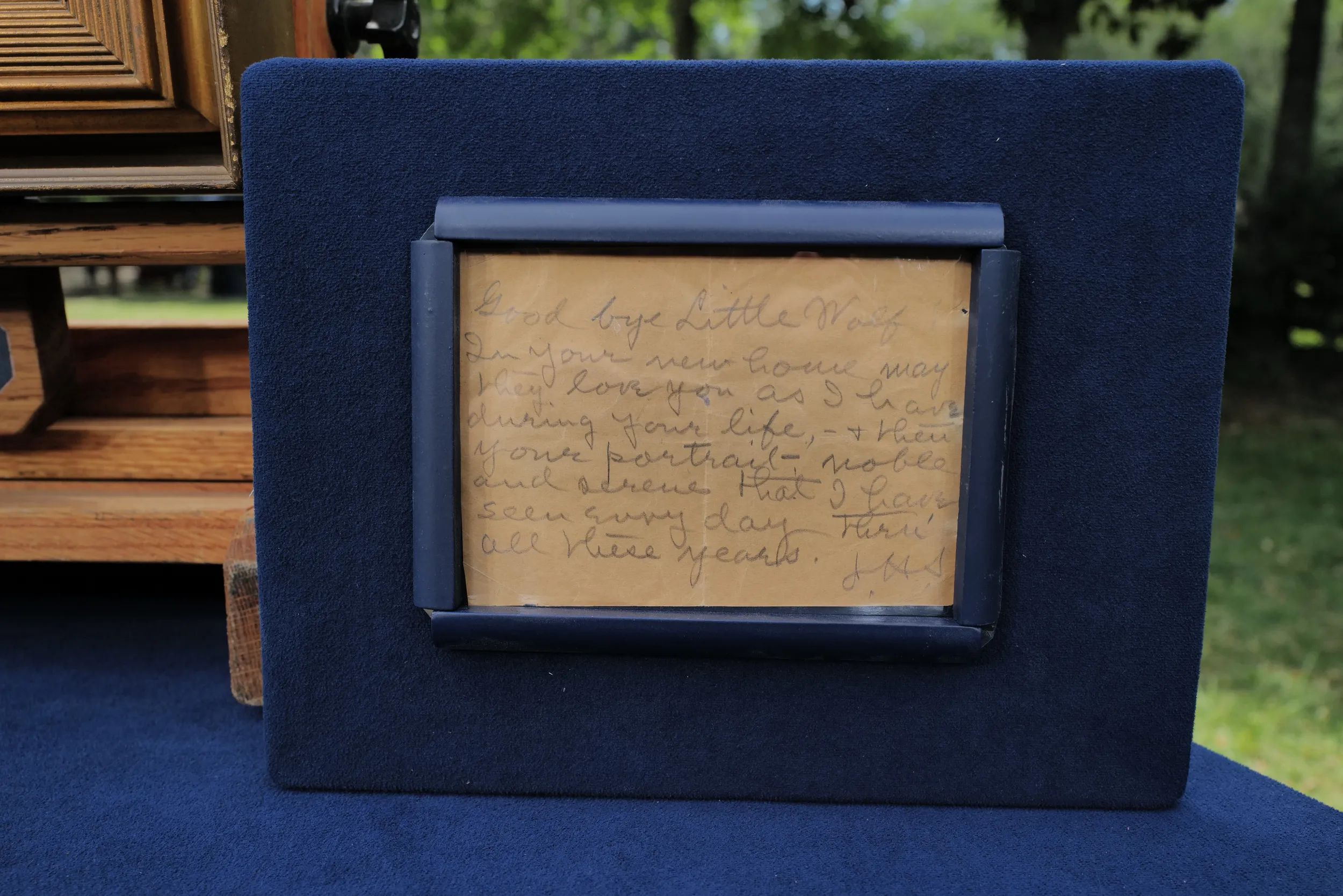GUEST: My husband and I inherited it from his father in 2014-2015. My father-in-law received it as a graduation gift from his grandmother in 1959, when he graduated from U.N.C. His grandmother, or my husband's great-grandmother, vacationed, uh, where the original artist lived, and apparently she saw it in his home and purchased it from him.
APPRAISER: So this is a painting by Joseph Henry Sharp.
GUEST: Mm-hmm.
APPRAISER: Uh, who was an American painter. He was born in 1859 in, in Ohio, and moved to the Cincinnati area as a teenager. Ended up passing away in Pasadena, California, in 1953. And visited Taos for the first time in 1883. Was one of the founders of the Taos art colony, along with a number of other... Uh, they called them the Taos Ten. Joseph Henry Sharp was classically trained. He went to art school. He did go to Europe, where he met a couple of the other painters who ended up coming back to Taos and being part of that original group of artists that were the Taos founders. And throughout his career, he was a painter of people. On the back of this painting, there's some writing that indicates that this is Chief Little Wolf, who was the chief of the Northern Cheyenne tribe. He fought against General Custer and was a great chief of renown. Sharp did several portraits of Little Wolf...
GUEST: Oh, I...
APPRAISER: ...um, that are in a number of museums. And on the back, it says, "Chief Little Wolf, about 1898 to 9, Cheyenne," and "With Two Moons, "commanded all Cheyennes in Custer battle. "A great tactician. "The two feathers denote he had killed his enemies in honorary battle." And he did begin, uh, painting in that area around 1898. So this might have been one of the earlier portraits. Chief Little Wolf, uh, died in 1904. It's signed "J.H. Sharp," which is how he signed his name. Can you tell us a little bit about this note that you have here?
GUEST: Whenever my father-in-law's grandmother was purchasing it for him, she had become friends with the artist, and she bought this from his home. So apparently, he wrote a goodbye note to this piece of art that hung in his home. So you can tell it was probably very dear to him. So the note says, "Goodbye, Little Wolf. In your new house, may they love you as I have during your life, and then your portrayal, noble and serene, that I have seen every day through all these years. JHS."
APPRAISER: That's a great story. Yeah, he did do a number of these portraits. For a while, he camped basically on the Custer battleground. And Sharp did a number of portraits there.
GUEST: I did not know that.
APPRAISER: Do you know how much she paid for it?
GUEST: Well, um, it is rumored between $500 to $5,000, because she was very private... (laughs): ...about how she spent her money.
APPEAISER: Whether it was $500 or $5,000, that was a lot of money. Have you ever had the painting appraised?
GUEST: Um, my husband had it appraised in 2014. They estimated $45,000. But I think that might be close to the up, the top limit of it.
APPRAISER: It's an oil on canvas. It, it looks like it's in very good shape. I know you mentioned that you had it cleaned.
GUEST: Mm-hmm.
APPRAISER: But, um, the colors are bright. It's a very good example of this period. I would say the, the auction estimate for a piece like this would
probably be $50,000 to $70,000.
GUEST: Okay.
Appraiser: And if it were to be in a retail environment, it would be, uh, priced at about $85,000.
Guest: Wow. That was, um, more than I thought. (laughs) Wow!













